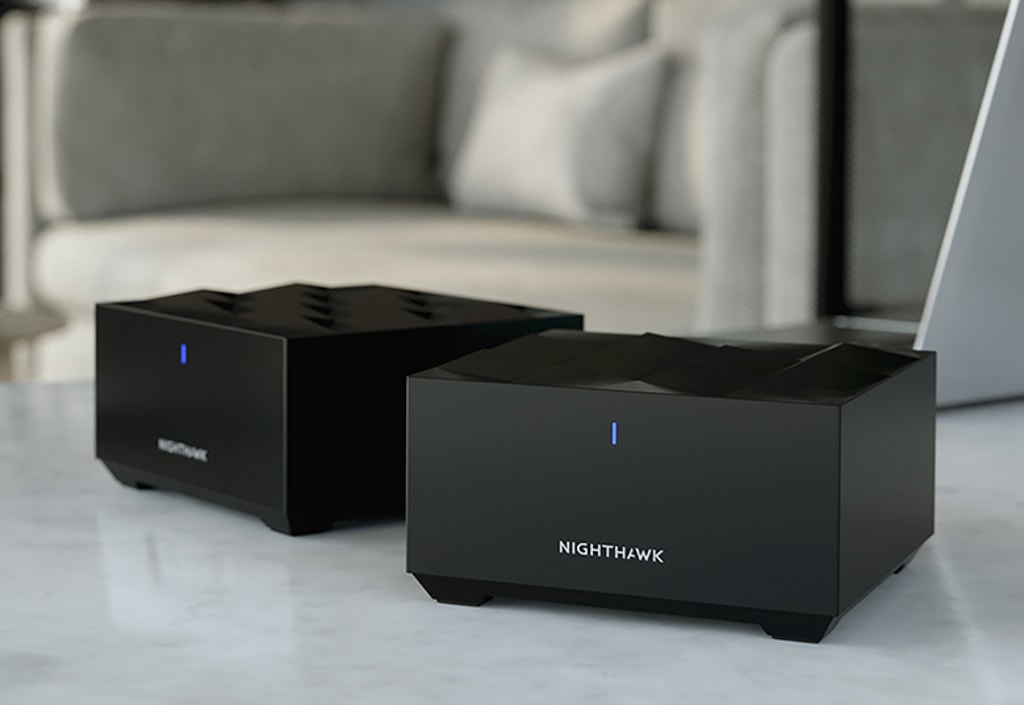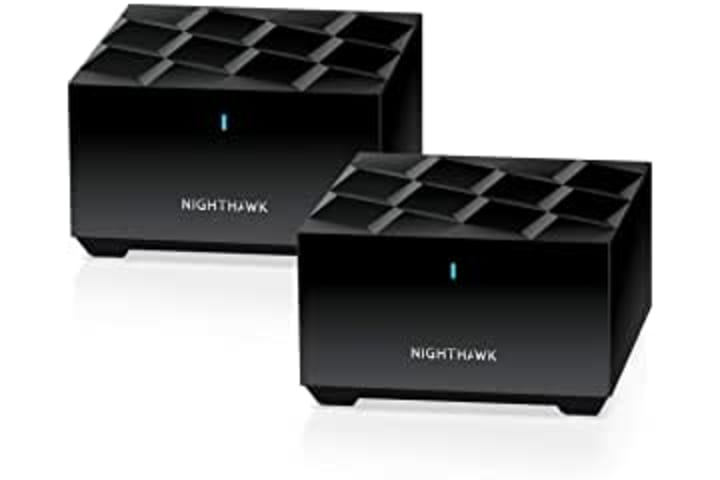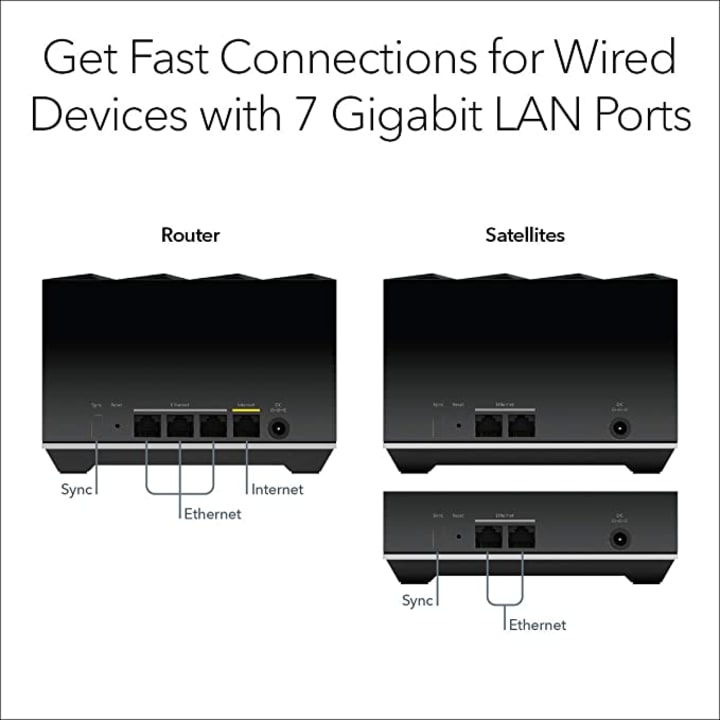"Screaming" WIFI Speeds was my Goal
It Can Only Get Better

For years a small group consisting of my friends and me have competed to have the most reliable and speedy internet service. We often joke about the old dial-up 2400 bps (Baud Per Second), which graduated to the 44K modems that hit the market many years ago. This was replaced with the 56K modems, and then we were off to the races. We had an extra turbo boost, and we had made noticeable gains, but this was taxing to the existing telephone service. I remember many instances where we downloaded something and left the computer to complete its task overnight. It was an accomplishment when we saw it successful the next day. Often, it was revealed the session had timed out or lost connection halfway through. "Mission not accomplished."

Jumping from the telephone lines to broadband was a breath of fresh air. No more would we have to wait hours for songs to download; videos would not sporadically play with significant delays. I am uncertain as to the progression at this point, but it almost seems like a blur. There was DSL (Digital Subscriber Line), and the speeds were off the charts. Cable offered their broadband as well. We opted for the former in my household, and we seemed happy. It was almost like a breath of fresh air when we could complete downloading the newest album in just a few minutes instead of many hours. We had entered a new age. Somewhere in this newfound speed highway, it became imperative to unplug from the wall and adopt WI-FI. I remember buying my first wireless router. I believe it was a simple D-Link router that transmitted at 802.11b. 802.11a was available but was more expensive and geared more for businesses as it was on the 5 GHz band. 802.11b was on the 2.4 GHz band and could penetrate obstacles more readily. I could roam around my house with my laptop and still surf the internet and retrieve my e-mail. Were the speeds incredible, not entirely, but it was functional? I believe the rates topped out at 11mb/s.
From 802.11b, we jumped to 821.11g and saw significant speed gains. We could hit speeds closer to 54 mb/s. Being the early adopter I was, I replaced the modem card in my computer and bought the latest router to hit the higher speeds. It wasn't long before 802.11n was adopted, and it was also the first to incorporate the usage of both 2.4 GHz and 5.0GHz signals. This improved the data throughput (600mps) and range (over 200 ft indoors). I, of course, had to have this. Another upgrade, probably a new computer, was also in my budget and a call to my internet provider to increase my speed. Keep in mind everything was backward compatible at the time, but older technology could not be upgraded. We went from WI-FI 1 (802.11 a & b) to WI-FI 3 (802.11 g) to WI-FI 4 (802.11 n). How much faster could we get?
Ask, and you shall receive. WI-FI 5 or 802.11ac was soon introduced in 2013, and we saw our speeds jump to 1300 Mbps on 5GHz bands and 450mbps on 2.4 GHz bands. We could transmit to multiple devices at the same time. This opened up a whole realm of possibilities. At this time, I invested in a couple of devices made by a company called Amped Wireless. The wireless router, along with the range extender, advertised a range of 15,000 square feet. I would be more than covered throughout my home, with no dead pockets anywhere through all of my walls. It worked very well, and I was pleased because I would be covered for a few years.
The 802.11ac standard lasted for quite some time until it was announced WI-FI 6 (802.11ax) was entering the ring. Did I have to have this? No, but the technophile in me told me I needed this. Possible speeds could max out at 10Gbps. It will work with more devices simultaneously, is more secure, and will decrease latency. So this brings me full circle to the last purchases I made. I say purchases because it wasn't as simple as one and done. I ventured into the mesh internet market, which involved buying the following:

These devices (Netgear Nighthawk MK62 AX1800) checked off all of my needs at the time. They covered a nice size area and eliminated "most" of my dead spots. I was able to achieve near gig speeds, and they even have their own LAN connection on the back to wire in a nearby device if you opt to go that way. It wasn't as simple as buying these and plugging them in. The router had to be replaced to support the new WI-FI 6 standard. I needed to purchase a DOCSIS 3.1 cable modem. DOCSIS stands for Data Over Cable Service Interface Specification, and this supported speeds of up to 10 gigabits per second. I opted to buy the ARRIS SB8200, and it works well for my purpose. In my house of roughly 1700 square feet above the basement, the coverage was pretty consistent. Could it improve, absolutely? I was anxiously waiting for the satellites to become more readily available from Netgear as there often seemed to be a run on them just before and during the pandemic.
Over time I was able to secure another satellite, and my coverage was secure. Then came my recent move. We soon were faced with a much larger house (we nearly doubled in size), and my coverage within our home was inconsistent. I decided, at the time, I could not make do with the current system. I need to broaden the range as the mesh seemed somewhat spotty.

At this time, I discovered Netgear was offering a step-up piece to their affordable WI-FI 6 mesh system. The AX3600 MK-83 system is nearly double the system I had. I was a little upset with myself as I had no idea that this system was available. The devices looked almost the same as the AX1800 units but were quite a bit taller. The new 3600 units would handle up to 40 devices simultaneously instead of the 26 the current system would. I could also cover up to 9000 square feet over the current 6000 square footage rating. There was yet another purchase in my future.
I also found out each satellite had two available LAN ports for possible wired connections. The wireless router had 4 Ethernet ports with 1 WAN and 3 LAN ports. I connected a 16 port switch into my WIRE Panel, and soon my whole house was connected. The system I bought (MK83) came with the two satellites right off the bat. Am I finally satisfied? This is the true question, as I still experience a few glitches here and there. I believe a 4th satellite may be necessary, but I am finally taking the wait-and-see approach. Often I am too quick to jump without weighing all of the options. For the most part, I am satisfied with my current setup. Minor tweaks here and there, and I may improve this setup without any additional improvements. This involves moving the Wireless router to a more central location and possibly further away from possible interference from other electronics. Although the promise of WI-FI 6E and WI-FI 7 is on the horizon…..
About the Creator
Jeffrey Clos
I am a lifelong inhabitant of Michigan. I decided to do something therapeutic and write a blogging website. www.inyerself.com
I touch on all subjects but my focus will be on Life Experiences, Technology, Home and Self Improvement.






Comments
There are no comments for this story
Be the first to respond and start the conversation.